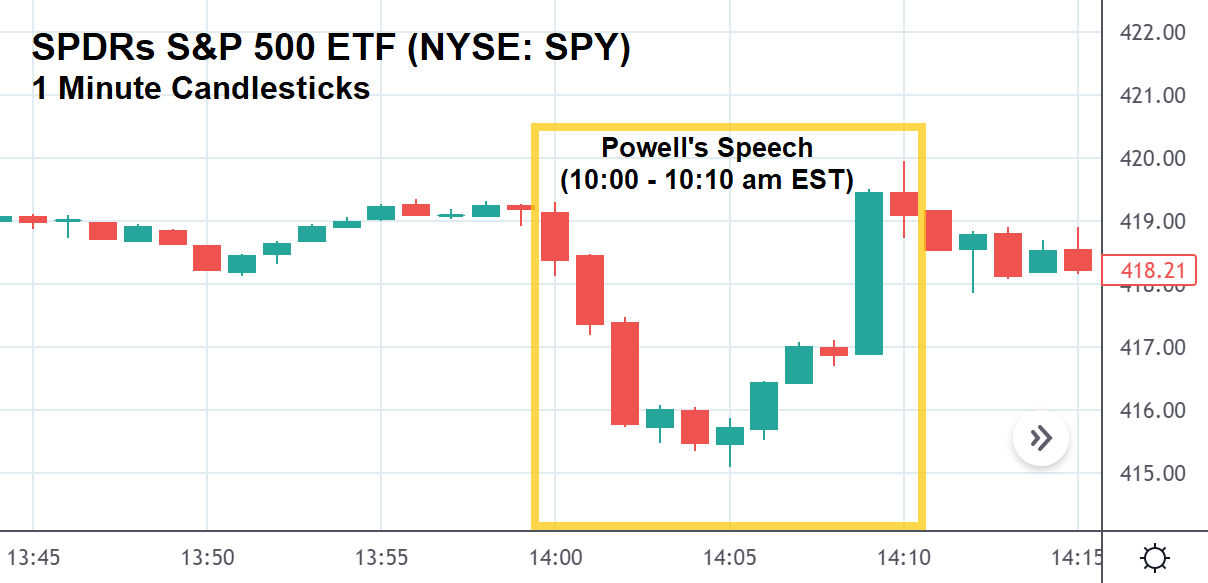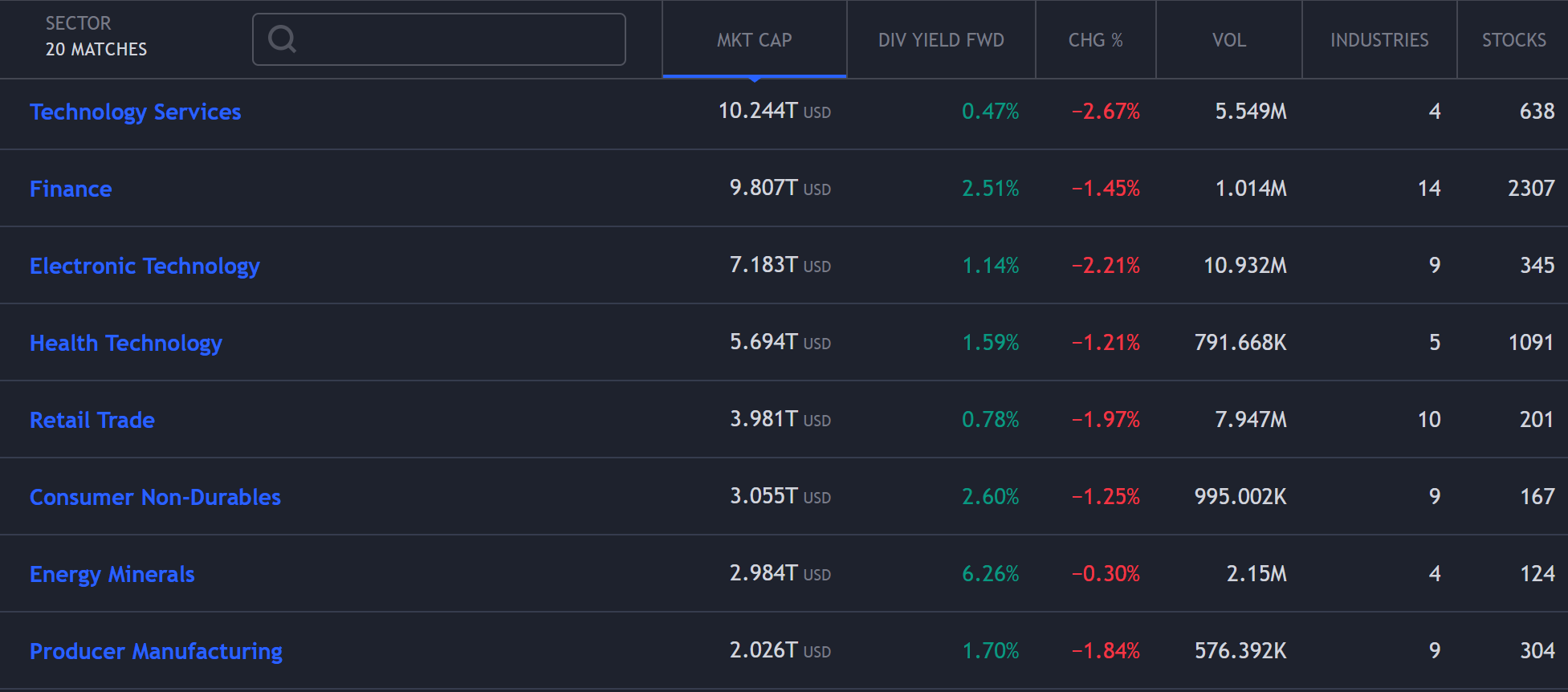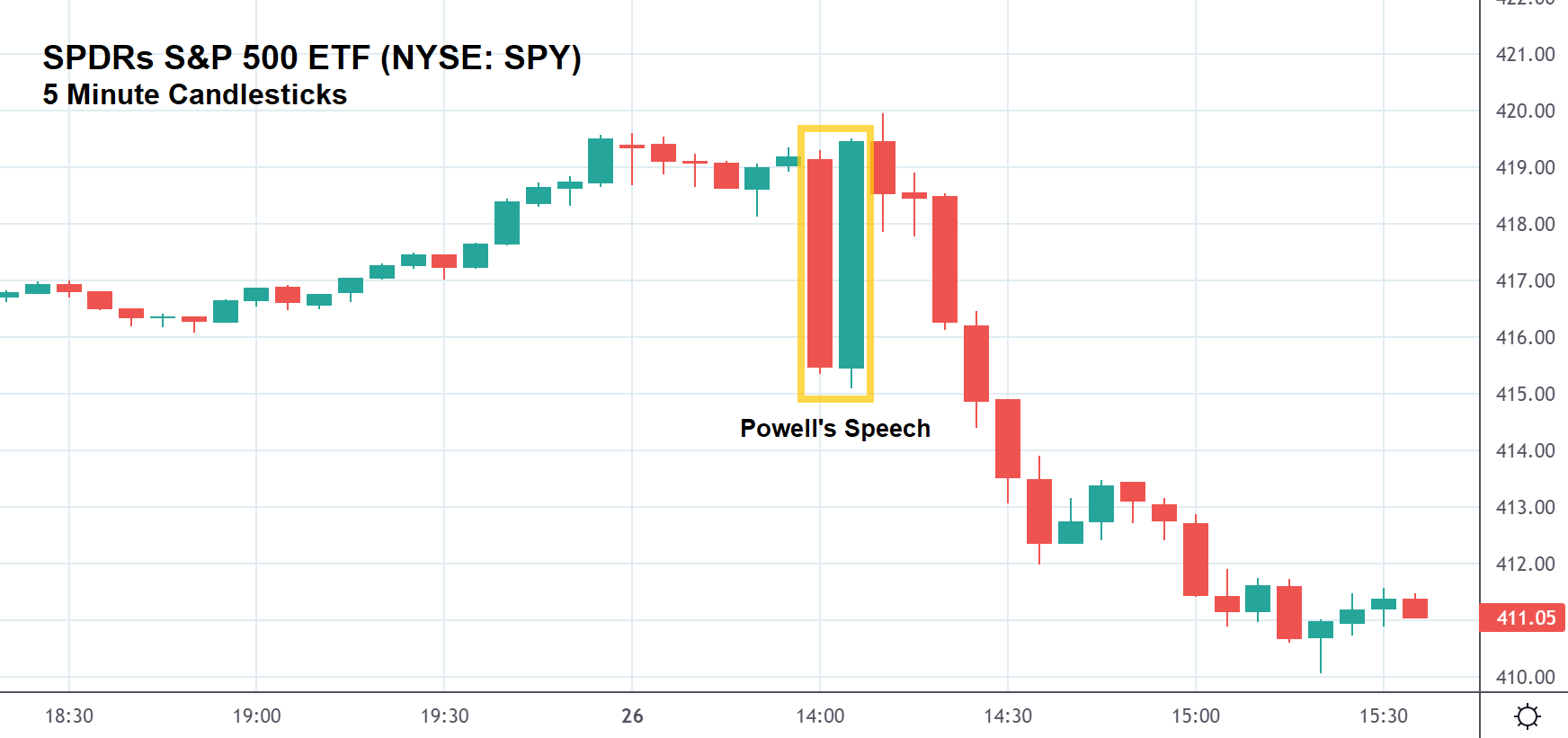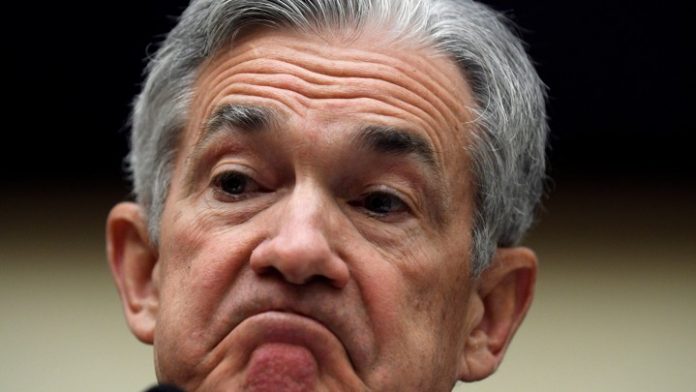Powell has spoken. And bulls, as predicted, did not like what he had to say.
The major indexes all tumbled immediately in response to Powell’s speech at 10 am EST before rallying sharply. The S&P, for example, dropped an entire percentage point before regaining all of its post-speech losses within the span of 10 minutes.

Big swings in price made it hard to gauge the market’s initial response to Powell’s speech.
After Powell was finished, however, stocks dove lower again. Automated, algorithmic trading drove almost the entirety of the initial volatility this morning. Then, around 10:30 am EST, actual human traders started the real selling.
Every sector was wounded deeply as stocks raced to their weekly lows.

Tech shares endured the brunt of the selling.
Stocks cratered this morning because Powell delivered a hawkish message, confirming what Fed officials hinted at – higher rates, slowed growth, and persistently high inflation – over the last week.
Powell began his speech by laying out the challenges that the US economy is currently facing. He said the size of the coming September rate hike will depend on the “totality” of recent economic data, and that “restrictive policy” may be required for some time.
Powell then invoked the great Paul Volcker, who famously squashed sky-high inflation in the late 70s/early 80s via a series of economy-crushing rate hikes. Many people hated Volcker for doing so at the time. Farmers even blockaded the Fed headquarters in Washington DC with their tractors in protest.
But Volcker ultimately saved the United States from entering a severe depression. This morning, Powell mentioned Volcker not to say that he’s going to unleash more “Volcker-like” rate hikes, but to discuss how the US can avoid a similar outcome this time around.
“We must keep at [lowering inflation] until the job is done,” Powell said.
“History shows that the employment costs of bringing down inflation are likely to increase with delay, as high inflation becomes more entrenched in wage and price setting. The successful Volcker disinflation in the early 1980s followed multiple failed attempts to lower inflation over the previous 15 years. A lengthy period of very restrictive monetary policy was ultimately needed to stem the high inflation and start the process of getting inflation down to the low and stable levels that were the norm until the spring of last year. Our aim is to avoid that outcome by acting with resolve now.”
Powell also issued a sobering warning to Americans:
“While higher interest rates, slower growth, and softer labor market conditions will bring down inflation, they will also bring some pain to households and businesses. These are the unfortunate costs of reducing inflation. But a failure to restore price stability would mean far greater pain,” he explained.
Powell finished his speech, saying that “we are taking forceful and rapid steps to moderate demand so that it comes into better alignment with supply, and to keep inflation expectations anchored. We will keep at it until we are confident the job is done.”
It was very hawkish overall save for one quote that seemed to spark major buying from algorithmic traders:
“At some point, as the stance of monetary policy tightens further, it likely will become appropriate to slow the pace of increases,” Powell said at about the 5-minute mark of his speech.
Shortly thereafter, however, stocks plunged as real-live traders on Wall Street started dumping their shares (or loading up on shorts).

Traders began to realize that the bear market rally was officially dead.
And, if the weekly lows fail to hold today, a bear market continuation should follow heading into September, which has historically been the worst month of the year for stocks, even without a mega-hawkish Fed speech to spike shares lower.








